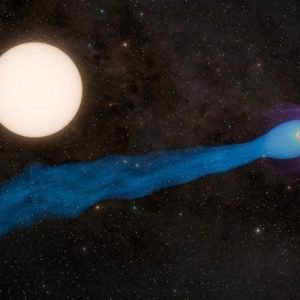
Messenger RNA–based therapeutics and vaccines are the new hope in the fight against incurable diseases. A commonly used strategy in the development of messenger RNA (mRNA) medicine is based on the destruction of disease-causing mRNA. Achieving the opposite and stabilizing health-promoting mRNA is still a great challenge.
The team of Peter ‘t Hart, group leader at the Chemical Genomics Center at the Max Planck Institute of Molecular Physiology has now overcome this challenge. The chemists developed the first active substance that inhibits the deadenylation of mRNA and thus prevents its degradation.
This study, now published in Angewandte Chemie International Edition, offers a promising starting point for the development of innovative mRNA-based therapeutics and tools for biologists to provide valuable insights into the process of mRNA degradation.
mRNA transports the most valuable cellular information—the chemical blueprint for the production of proteins—from the nucleus into the cytoplasm. However, as soon as mRNA has delivered its message to the protein-producing factories in the cytoplasm, it is no longer needed and is degraded by exonucleases.
Depending on how long the mRNA remains in the cytoplasm, more or less of a protein is produced—be it health-promoting or disease-causing. The regulation of mRNA levels is one of the most promising strategies in the emerging field of RNA-based therapeutics.
How to protect the messenger
The team has now developed a new strategy to extend the lifespan of mRNA by protecting it from its dismantling. Interestingly, mRNA is not particularly stable by nature and would be degraded prematurely without molecular caps protecting the two mRNA ends.
At its so-called 3′ end, mRNA is equipped with a polyadenine tail with an average length of 200 nucleotides. But even this shield does not last long—the average half-life of mRNA is only seven hours.
In a process called deadenylation, the target mRNA is recruited by RNA-binding proteins to the protein complex CCR4-NOT, which removes one adenine after the other. And this is precisely where the scientists’ new strategy comes in.
Based on the structure of the mRNA-binding protein, they have developed a large peptide that can block the interaction of the CCR4-NOT complex with the target mRNA. Large peptides, however, have problems overcoming (crossing) cellular barriers, which they have to do if they are to be used as drugs.
By revealing the 3D-structure of the peptide-inhibitor bound to the target, the chemists were able to make modifications that improved the cell permeability of the peptide.
Increasing the stability of potentially health-promoting proteins
The scientists were able to take their work even one step further and demonstrate the potential of their strategy in cellular assays. Treating cells with the peptide stabilized the polyadenine tails of two potential health promoting proteins: a tumor suppressor, which could have beneficial effects in cancer and a nuclear receptor, whose increasing levels could help to treat various aging-related diseases.
“The concept of stabilizing beneficial mRNAs by blocking their deadenylation has not yet been explored. Since almost all mRNAs undergo this process, blocking them can be used to develop new drugs that offer a new way to treat diseases where other strategies have failed,” says ‘t Hart.
His group is currently working on the development of further inhibitors against other components of the deadenylation machinery.
More information:
Sunit Pal et al, Stapled Peptides as Inhibitors of mRNA Deadenylation, Angewandte Chemie International Edition (2024). DOI: 10.1002/anie.202413911
Citation:
First mRNA stabilizing substance could aid in development of innovative mRNA therapeutics (2024, October 16)
retrieved 16 October 2024
from https://phys.org/news/2024-10-mrna-stabilizing-substance-aid-therapeutics.html
This document is subject to copyright. Apart from any fair dealing for the purpose of private study or research, no
part may be reproduced without the written permission. The content is provided for information purposes only.






